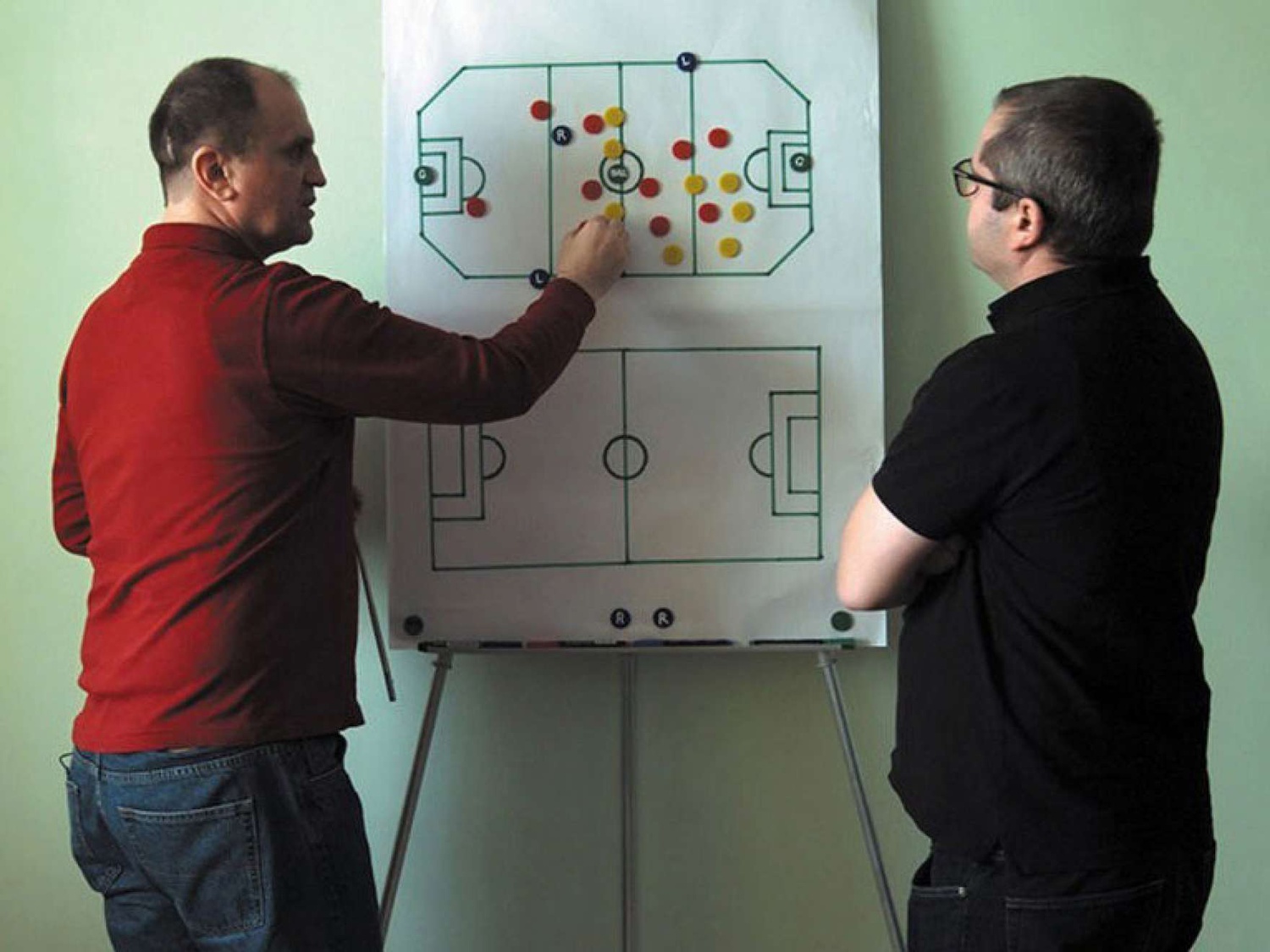
News
Summers Will Not Finish Semester of Teaching as Harvard Investigates Epstein Ties

News
Harvard College Students Report Favoring Divestment from Israel in HUA Survey

News
‘He Should Resign’: Harvard Undergrads Take Hard Line Against Summers Over Epstein Scandal

News
Harvard To Launch New Investigation Into Epstein’s Ties to Summers, Other University Affiliates

News
Harvard Students To Vote on Divestment From Israel in Inaugural HUA Election Survey
Yearning for a Revolution in ‘Infinite Football’
Dir. Corneliu Porumboiu—4 stars

“Infinite Football” opens on typically bleak Romanian scenery: a grey ice-skating rink with no one on it, separated from the rest of the grassless and treeless landscape by a chain-link fence. Though it’s not immediately clear, the viewer is watching Corneliu Porumboiu, the film’s director, in conversation with Laurentiu Ginghina, the subject of the documentary, as Ginghina explains the origins of his ambition to revolutionize soccer. Much of the film is structured as a conversation between the two men, and this technique works well in exploring Ginghina’s obsession with changing the rules of soccer. At times, however, it limits what could be a more emotionally incisive documentary. After all, it’s set in post-communist Romania, a setting that makes Ginghina’s story more poignant given the similarities between his journey to reform soccer and the country’s journey to leave a 40-year regime in the past — a connection that could have made the film fuller and more electrifying to watch.
During the summer of 1986, Ginghina was playing soccer with friends when someone, aiming for the ball, kicked him in the shin instead. The fracture didn’t heal properly, ending his soccer career before it began and dashing his hopes of entering a forestry university. Both activities required running, something he could no longer do. The injury came back to plague him in adulthood: His tibia broke when he was miles away from home, leaving him with no choice but to limp the entire journey. The rest of the documentary chronicles his attempts to change the rules of soccer, including his ideas to remove the corners of the field to streamline the area of play, to restrict players’ motion in order to emphasize passing and reduce the chance of collisions, and to do away with offside — a penalty called when a player is closer to his or her opponent’s goal line than both the ball and the second-last opponent — altogether. Many are skeptical of his new ideas.
Porumboiu has chosen a simple and effective structure for the film, orienting the camera towards himself and Ginghina, or placing Ginghina squarely in the middle of the frame as he answers questions. Throughout the 70 minute film, the setting changes only a few times — shuffling between a skating rink, an industrial factory, Ginghina’s office, a gym, and the home of an old photographer. Though the focus of the film is not on the setting itself, but rather on Ginghina, the diversity of settings helps orient the viewer in Ginghina’s world and plays a large role in contextualizing Ginghina’s trajectory and in setting a fittingly somber tone for the film as a whole.
One of the most tragicomic scenes of the film takes place in Ginghina’s office, where he makes phone calls on a woman’s behalf, who, after the Romanian Revolution against the Communist Party in 1989, never saw the land she once owned rightfully returned to her from the government. The man accompanying her repeatedly thanks Ginghina for helping her, expressing his gratitude that he even let them into his office in the first place. To an American viewer acquainted with relatively effective and efficient civic institutions, this scene seems absurd: Processing forms and papers is his job. However, in Romania, where bureaucracy is needlessly complicated and bribery-dependent, citizens have come to expect that legal government help will take months, years, or never even arrive.
Porumboiu brings a unique insight to the documentary in drawing visual parallels between Ginghina’s ambitions and the future of Romanian modernization. Ginghina’s hope to make the game he loved so much as a child safer for the players who have the opportunity to do what he never could, seems to mirror Romania’s many attempts to move beyond forty-odd stifling years of Communism. Ginghina himself alludes to this tortured progress: In 1999, he says, Romania was accepted into the European Union, and things got better — until progress slowed to a crawl. Romanian citizens are used to bureaucrats trying things out, only for their ideas to hit a roadblock or cause new problems entirely. Against this backdrop of failed political ventures, watching others, including Porumboiu, express their skepticism that Ginghina can ever reform the game is painful, yet riveting. “Infinite Football” is thus a portrait of a man wrestling not only with the problem of his lifetime, but with a country struggling to move forward into the 21st century.
Ginghina’s and Romania’s difficulties are evident in the last scene, which is perhaps the most impactful of all. The film shot opens to a road lined with dilapidated and crumbling houses, presumably a few minutes before dawn, and the scene is predominantly colored a slate-tinged blue. The camera moves slowly, as if to mimic Ginghina’s limp, which he discussed in the beginning of the film. Ginghina explains the phasing out of violent language in the Bible, and, by analogy, hopes to steadily change the “violent” rules of soccer: “Football as utopia,” Porumboiu says. That’s what Ginghina seems to idealize for the future of the game. By the end, however, the viewer is no closer to knowing whether he will succeed, nor if the desolate Romanian landscape will ever change, but the blueness of the final scene will leave anyone hoping, rightly, that one of those two things might come true.
—Staff writer Cassandra Luca can be reached at cassandra.luca@thecrimson.com.
Want to keep up with breaking news? Subscribe to our email newsletter.
